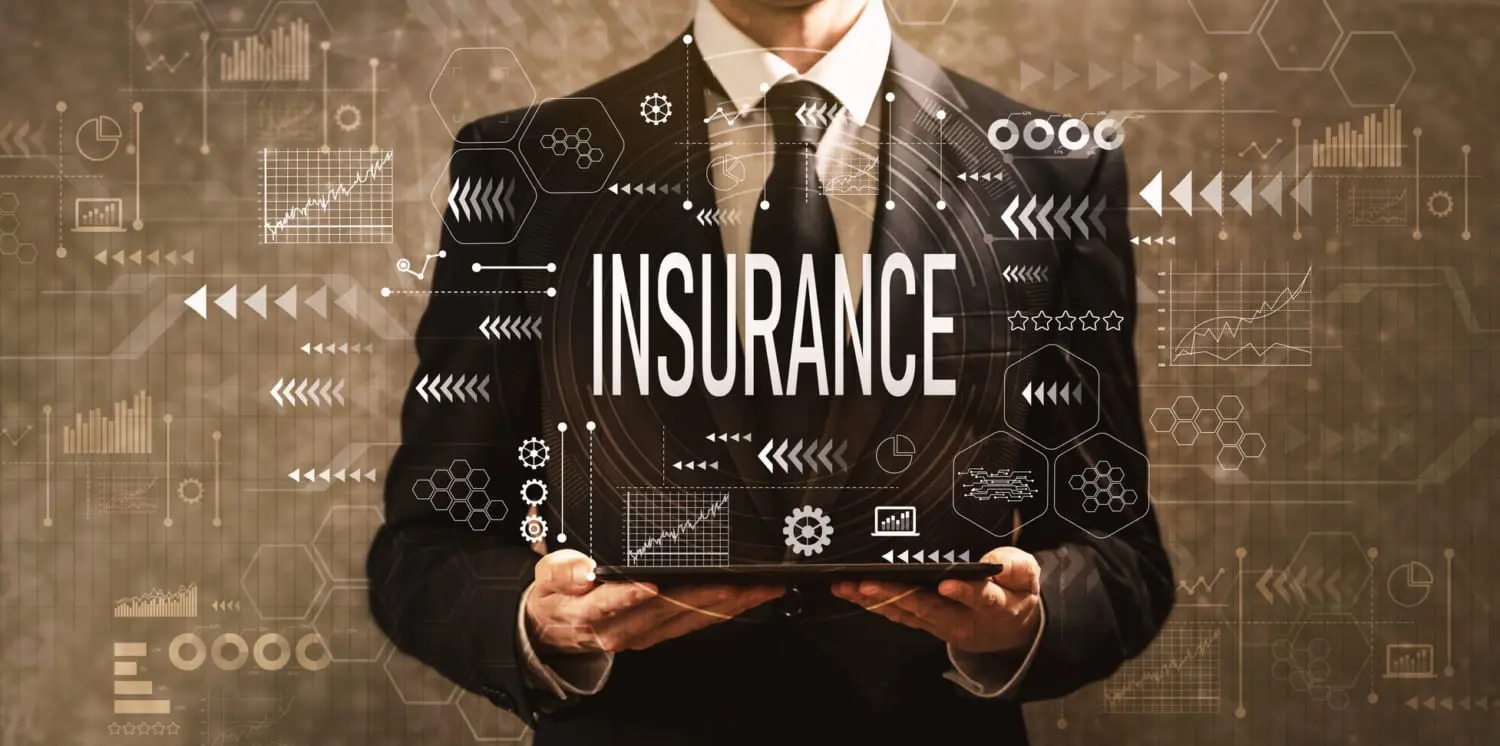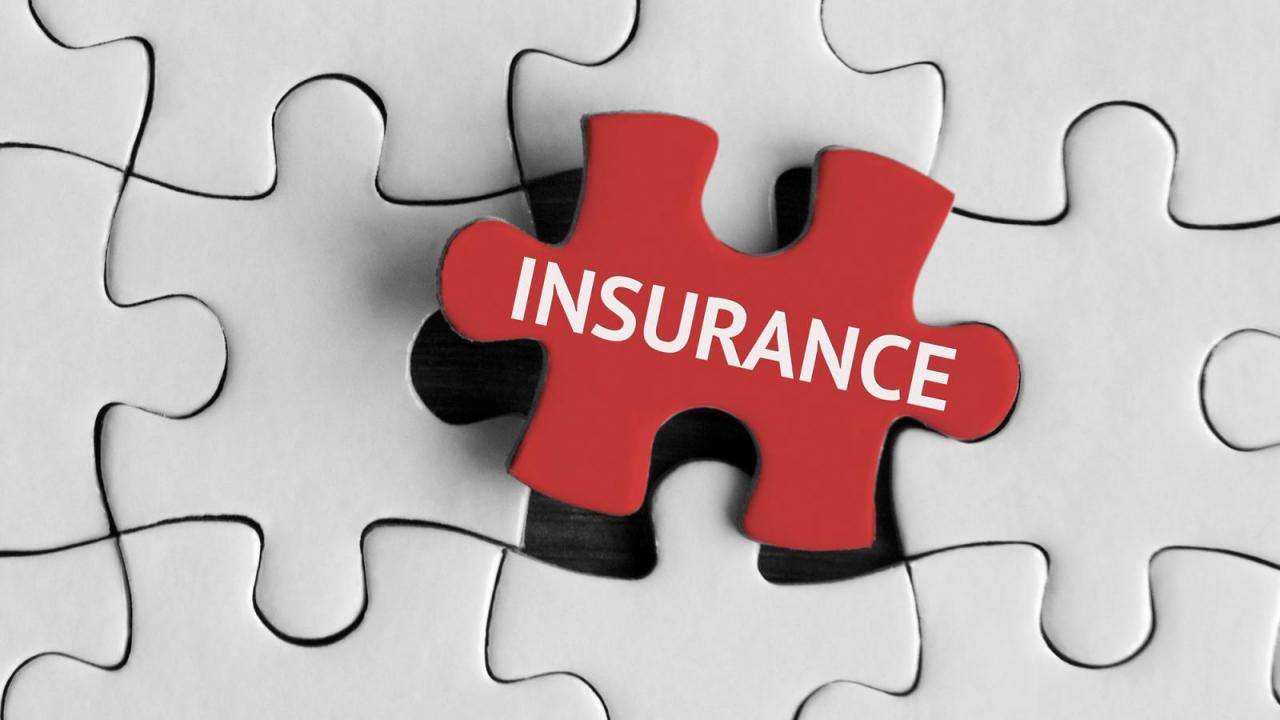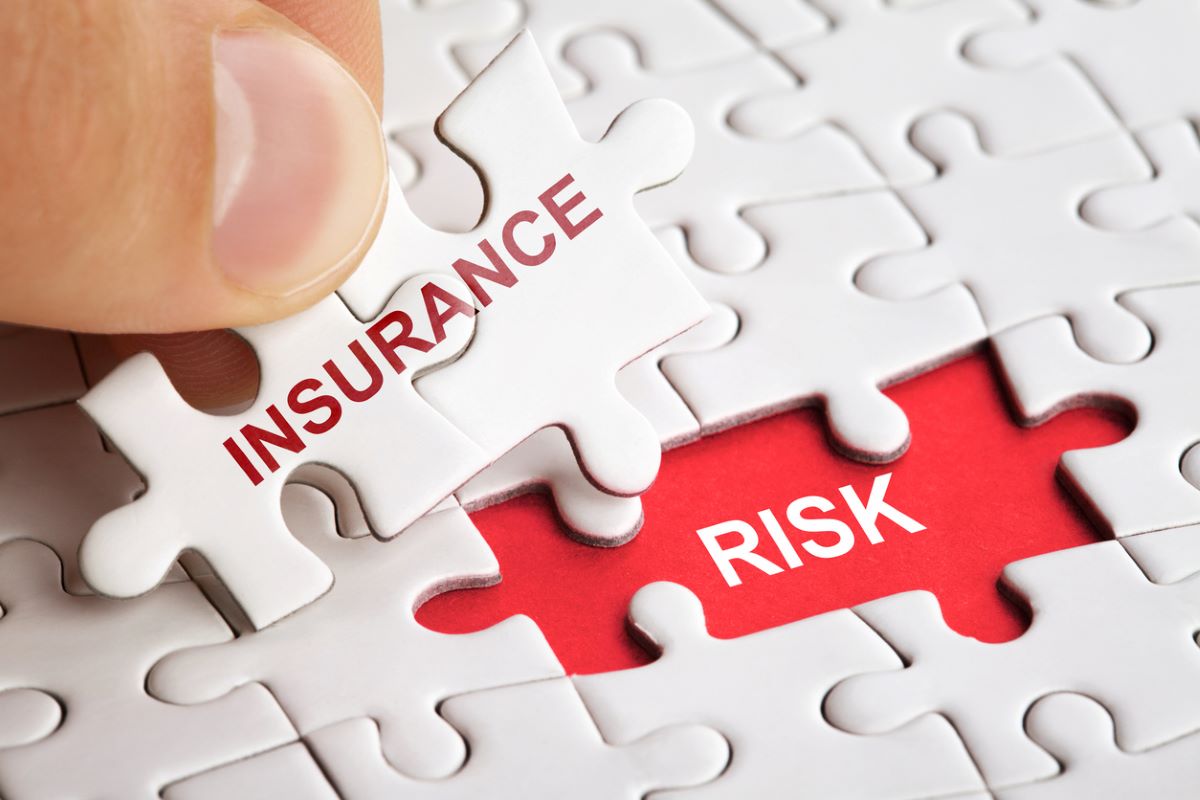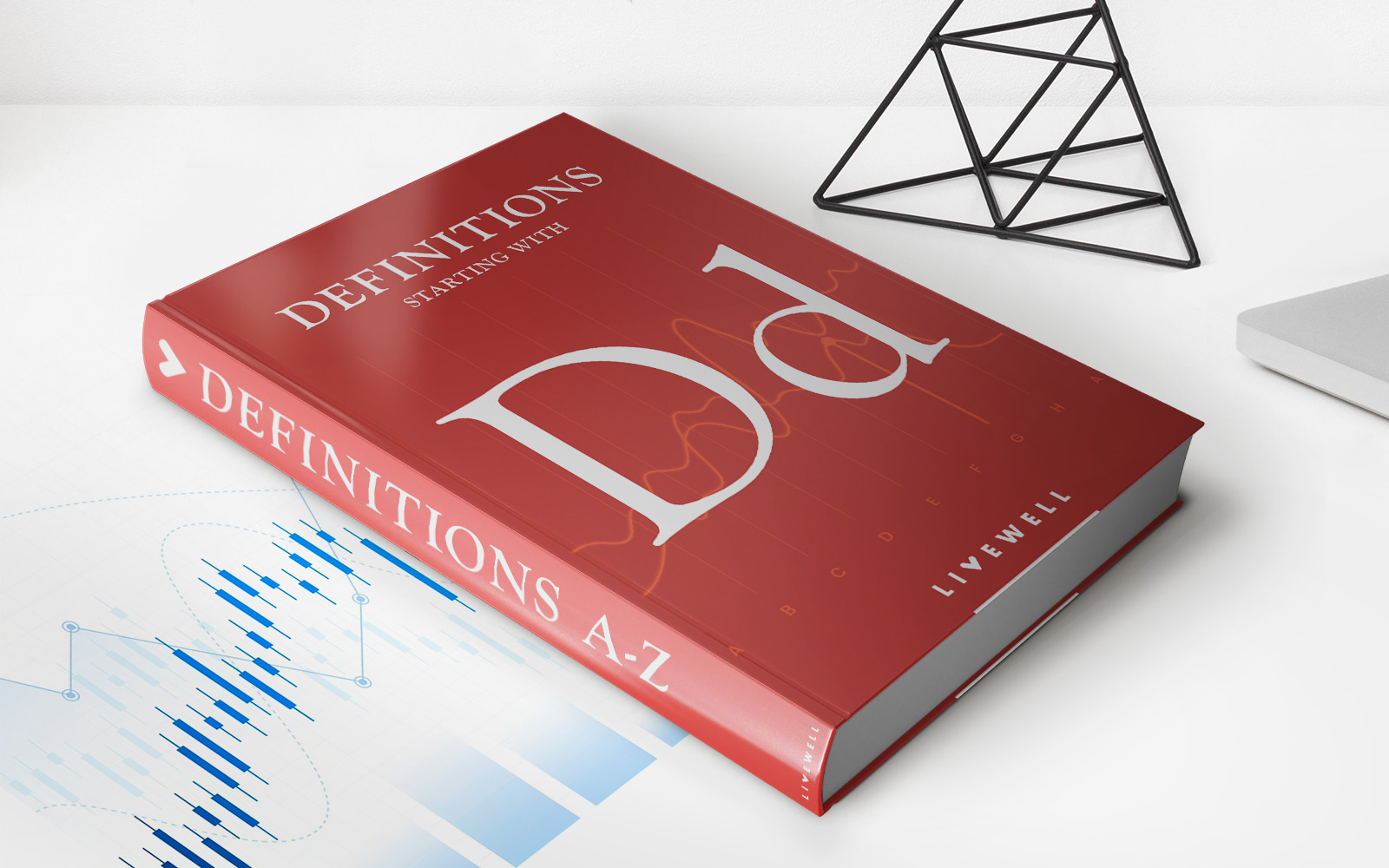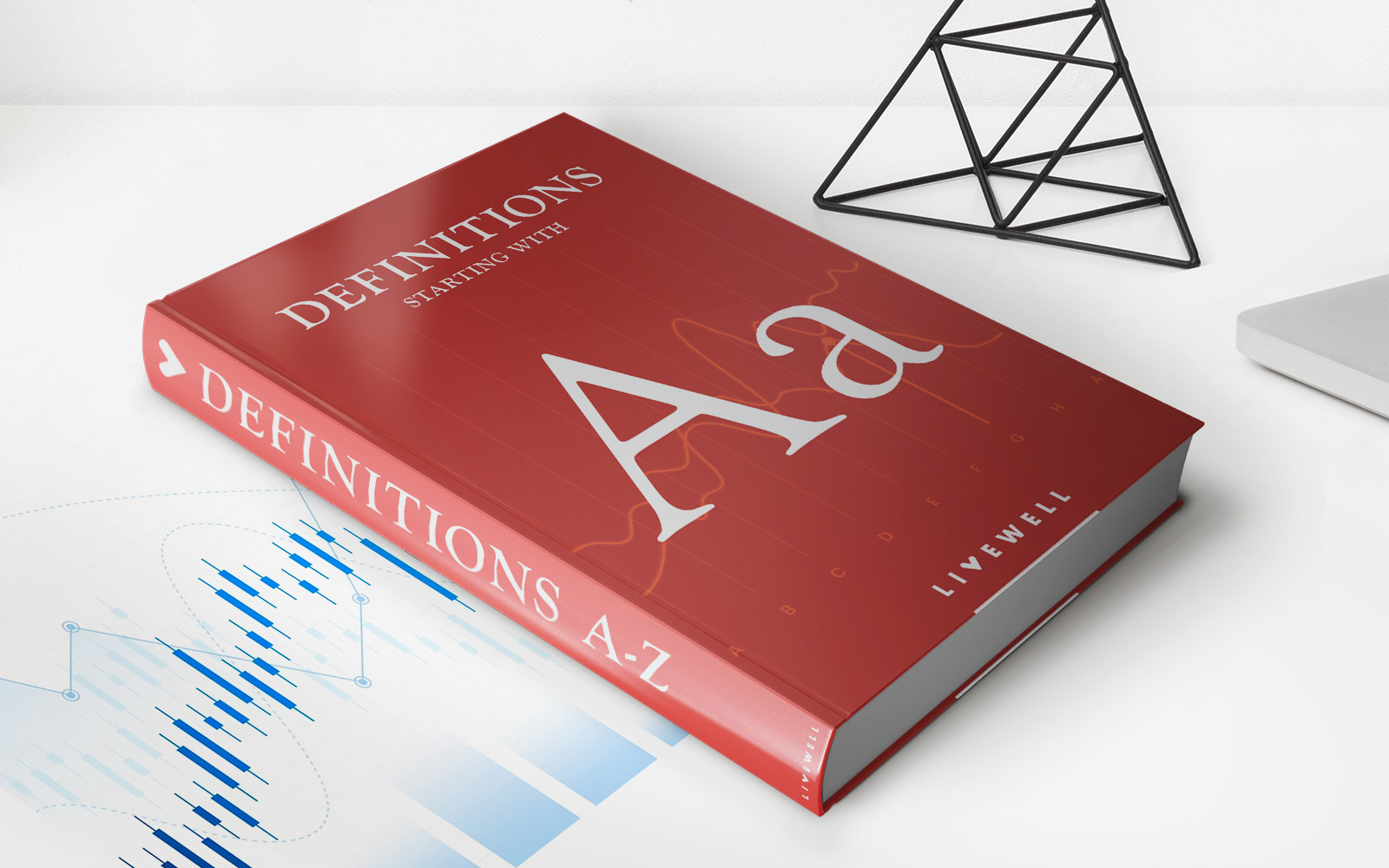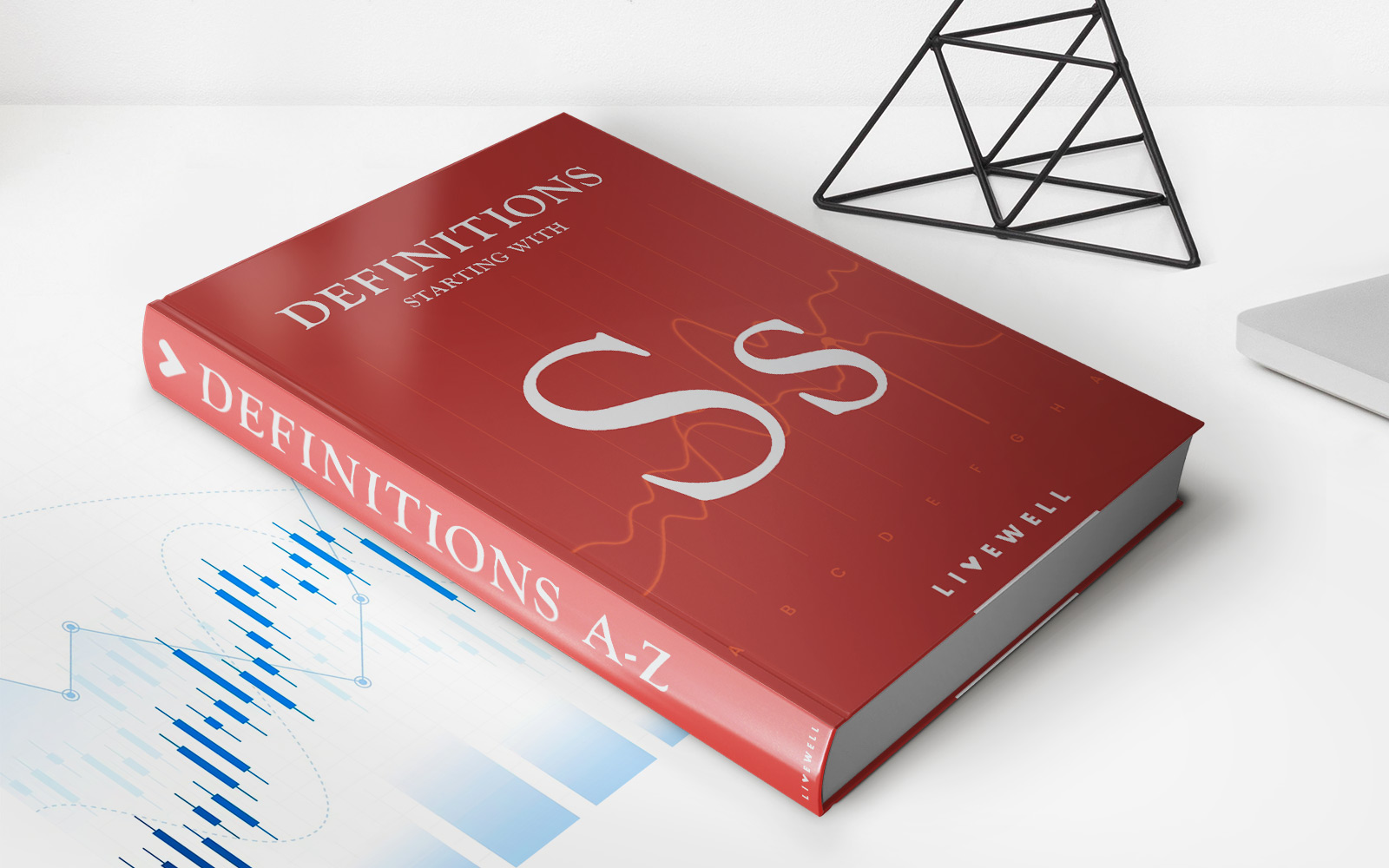

Finance
What Is TPL Insurance?
Published: November 18, 2023
Discover the benefits of TPL insurance and how it can protect your finances. Get peace of mind knowing you're covered in case of unexpected events.
(Many of the links in this article redirect to a specific reviewed product. Your purchase of these products through affiliate links helps to generate commission for LiveWell, at no extra cost. Learn more)
Table of Contents
Introduction
Welcome to the world of TPL insurance – an important aspect of the finance industry that is often overlooked or misunderstood. TPL, which stands for Third-Party Liability, is a type of insurance that protects individuals or businesses from financial loss in the event of a claim made against them by a third party.
Accidents happen, and when they do, there can be significant financial implications. Whether it’s a car accident, a slip and fall incident, or damage caused by a faulty product, the responsibility for any resulting injuries or property damage may fall on the party deemed liable. TPL insurance, therefore, acts as a safety net, providing coverage for such liabilities.
So, how does TPL insurance work? Essentially, when an individual or business purchases TPL insurance, they are transferring the risk of a potential liability claim to the insurance company. In the unfortunate event that a claim arises, the insurance company will handle the financial aspects, including legal fees, settlements, or judgments, up to the limits of the policy.
TPL insurance is not limited to specific industries but can be relevant in various sectors. For instance, in the automotive industry, car owners are required to have TPL insurance to cover any potential damages or injuries caused to others in an accident. Similarly, businesses that operate in the service sector, such as restaurants or healthcare providers, may opt for TPL insurance to protect themselves from claims related to customer accidents or injuries.
It’s important to note that TPL insurance typically covers only third-party claims and does not provide coverage for the policyholder’s own losses or damages. For comprehensive coverage that includes both third-party liability and own damage, individuals or businesses may need to consider purchasing additional policies or opting for comprehensive insurance packages.
In the following sections, we will delve deeper into the specifics of TPL insurance, including the coverage it provides, its importance, benefits, limitations, and factors that can affect premium rates. We will also discuss how to obtain TPL insurance and differentiate it from comprehensive insurance. By the end of this article, you’ll have a comprehensive understanding of TPL insurance and its role in protecting individuals and businesses from unforeseen financial liabilities.
Understanding TPL Insurance
When it comes to insurance, it’s essential to have a clear understanding of the different types of coverage available. TPL insurance, or Third-Party Liability insurance, is a specific form of insurance that protects individuals and businesses from financial loss in the event of a claim made against them by a third party.
At its core, TPL insurance is designed to cover the policyholder’s legal liabilities arising from injuries or property damage caused to another person or entity. This can include bodily injuries, medical expenses, property damage, legal fees, and even settlements or judgments made against the policyholder.
One of the primary reasons why TPL insurance is crucial is the potential financial impact that liability claims can have. A single accident or incident can lead to significant financial loss, especially if the injured party decides to pursue legal action. Without appropriate insurance coverage, individuals and businesses may find themselves facing hefty expenses, including legal fees and potentially large settlement amounts.
TPL insurance is versatile and can be applied across different industries and scenarios. For example, in the automotive sector, TPL insurance is mandatory for all vehicles to protect against liabilities arising from accidents. In the event of a car accident where you are found to be at fault, your TPL insurance would cover the medical expenses of the injured party, repairs to their vehicle, and any legal fees that may arise.
In the service industry, TPL insurance becomes essential as well. Suppose you own a restaurant and a customer slips and falls on a wet floor, resulting in injuries. Without TPL insurance, you may be held financially responsible for the medical expenses and any potential legal claims the injured customer may make. However, with TPL insurance coverage, the insurance company would step in and handle the costs on your behalf, up to the limits of the policy.
It’s important to note that TPL insurance typically covers only the liabilities of the policyholder and does not provide coverage for the policyholder’s own losses or damages. For example, if your vehicle is damaged in an accident, TPL insurance will not cover the cost of repairs or replacements. To protect against such losses, individuals and businesses may need to consider additional insurance coverage, such as comprehensive insurance.
Furthermore, TPL insurance coverage may vary depending on the specific policy and insurer. Different policies may have different limits, exclusions, and deductibles. It’s essential to thoroughly review the terms and conditions of the policy to ensure you have a clear understanding of what is covered and what is not.
In the following sections, we will explore the coverage provided by TPL insurance, the importance of having this type of coverage, as well as the benefits, limitations, and factors that can affect TPL insurance premiums.
Coverage Provided by TPL Insurance
TPL insurance, or Third-Party Liability insurance, offers coverage for various types of liabilities that may arise from accidents, injuries, or property damage caused to third parties. Although coverage specifics may vary depending on the policy and insurer, here are some common areas typically covered by TPL insurance:
- Bodily injuries: TPL insurance provides coverage for medical expenses, rehabilitation costs, and potential income loss resulting from bodily injuries sustained by a third party in an accident or incident for which you are found liable.
- Property damage: If you accidentally damage someone else’s property, such as their vehicle, home, or belongings, TPL insurance can cover the cost of repairs or replacements.
- Legal fees and defense costs: TPL insurance typically includes coverage for legal fees and defense costs if a lawsuit is filed against you as a result of the incident. This coverage ensures that you have the necessary funds to hire legal representation and defend yourself in court.
- Settlements and judgments: In the event that you are found liable for an accident or incident, TPL insurance can help cover any settlement amounts or court-ordered judgments awarded to the injured party.
It’s important to note that TPL insurance coverage is usually subject to policy limits. These limits represent the maximum amount the insurer will pay for a covered claim. The specific policy limits can vary depending on the insurance company and the policy you choose. It’s crucial to assess your risk exposure and select appropriate coverage limits that align with your needs and potential liabilities.
Moreover, TPL insurance coverage typically extends beyond just the policyholder. It can also protect other individuals or entities who may be driving the insured vehicle or using the insured property with the policyholder’s permission. This means that if an authorized driver or a guest causes an accident, TPL insurance can still provide coverage for the liable party’s financial responsibilities.
However, it’s important to understand that TPL insurance does not cover every possible liability. There are certain exclusions that may vary depending on the policy and insurer. Common exclusions may include intentional acts, professional liabilities, intentional or willful misconduct, and liabilities arising from illegal activities. It’s essential to review the policy details and exclusions carefully to understand the specific coverage provided by your TPL insurance.
Lastly, it’s worth noting that TPL insurance covers the liabilities of the policyholder and not the policyholder’s own losses or damages. If you wish to protect your own vehicle or property against damage or loss, you may need to consider additional coverage options, such as comprehensive insurance.
In the next section, we will explore the importance of TPL insurance and why individuals and businesses should consider obtaining this type of coverage.
Importance of TPL Insurance
TPL insurance, or Third-Party Liability insurance, plays a crucial role in protecting individuals and businesses from potential financial hardship. Here are some key reasons why TPL insurance is important:
- Financial Protection: Accidents happen unexpectedly, and they can result in significant financial implications. Without TPL insurance, individuals and businesses may be held personally responsible for the financial repercussions of an accident or incident. TPL insurance provides a safety net, ensuring that in the event of a liability claim, the insurance company will handle the associated costs, including legal fees, settlements, or judgments, up to the limits of the policy.
- Legal Compliance: In some industries, having TPL insurance is mandatory from a legal standpoint. For example, in many countries, car owners are required to have TPL insurance to cover any potential damages or injuries caused to others in an accident. By having TPL insurance, individuals and businesses can ensure compliance with legal requirements and avoid potential fines or penalties.
- Protection against Lawsuits: Liability claims can often result in lawsuits, which can be time-consuming, stressful, and financially draining. With TPL insurance in place, individuals and businesses have the peace of mind that the insurance company will handle any legal proceedings on their behalf. This can help alleviate the burden of dealing with legal matters and allow the policyholder to focus on other important aspects of their life or business.
- Asset Protection: TPL insurance also serves as a means of protecting an individual’s or business’s assets. Without insurance coverage, a liability claim can potentially lead to the seizure or liquidation of assets to satisfy the financial obligations. TPL insurance provides a layer of protection, helping to safeguard personal assets and the financial stability of the business.
- Business Credibility: For businesses, having TPL insurance can enhance their credibility and reputation. With insurance coverage, businesses can assure their customers, clients, and partners that they are financially responsible and capable of handling any liability claims that may arise. This can give them a competitive edge in the market and foster trust among stakeholders.
Regardless of industry or personal circumstances, accidents and liability claims can happen to anyone. By having TPL insurance in place, individuals and businesses can mitigate the financial risks associated with these claims, protect their assets, ensure legal compliance, and maintain peace of mind. It is essential to assess your specific needs and consult with insurance professionals to determine the appropriate coverage and policy limits for your circumstances.
In the next section, we will explore the benefits and limitations of TPL insurance to provide a comprehensive understanding of its implications.
Benefits and Limitations of TPL Insurance
TPL insurance, or Third-Party Liability insurance, offers several benefits to individuals and businesses, but it also has certain limitations. Understanding both the benefits and limitations is crucial in making informed decisions about insurance coverage. Here are some key points to consider:
- Benefits:
- Financial Protection: TPL insurance provides much-needed financial protection by covering the costs associated with liability claims. It can help individuals and businesses avoid significant out-of-pocket expenses, especially in cases where the claim amounts are substantial.
- Legal Support: With TPL insurance, policyholders gain access to legal support and representation. The insurance company will handle legal proceedings, including hiring lawyers and paying for associated legal fees. This is particularly valuable in situations where liability claims lead to lawsuits.
- Peace of Mind: Having TPL insurance gives individuals and businesses peace of mind, knowing that they are financially protected against unexpected liability claims. It allows them to focus on their daily lives or business operations without worrying about the potential financial ruin that a liability claim can bring.
- Asset Protection: TPL insurance safeguards personal and business assets by providing a layer of protection against potential seizure or liquidation in the event of a liability claim. This protection can help individuals and businesses maintain their financial stability and continue their operations.
- Compliance and Credibility: In many industries, TPL insurance is a legal requirement. By having TPL insurance coverage, individuals and businesses ensure compliance with regulations. Additionally, having insurance coverage enhances credibility and trust among clients, customers, and partners, which can contribute to business growth and success.
- Limitations:
- Specific Coverage: TPL insurance covers only third-party liabilities and does not provide coverage for the policyholder’s own losses or damages. Additional insurance coverage, such as comprehensive insurance, may be needed to protect against personal property damage or injuries.
- Policy Limits: TPL insurance has policy limits, which represent the maximum amount the insurance company will pay for a covered claim. Policyholders should carefully assess their risk exposure and select appropriate coverage limits to ensure they are adequately protected.
- Exclusions: TPL insurance policies often have exclusions that may vary depending on the insurer. Exclusions may include intentional acts, professional liabilities, intentional or willful misconduct, and liabilities arising from illegal activities. It is crucial to review the policy details and exclusions to fully understand the coverage provided.
- Premium Costs: The cost of TPL insurance premiums can vary based on several factors, including the policyholder’s age, location, claims history, and the type of coverage selected. It’s important to understand that premiums may increase based on certain risk factors associated with the policyholder.
- Indirect Costs: While TPL insurance covers financial liabilities, it does not protect individuals or businesses from indirect costs, such as reputational damage or business interruption. These factors can still have an impact, even with insurance coverage in place.
Despite the limitations, TPL insurance provides critical protection against potentially significant financial losses. By thoroughly understanding the benefits and limitations, individuals and businesses can make informed decisions about their insurance needs and ensure they have appropriate coverage in place.
In the next section, we will explore the factors that can affect TPL insurance premiums, giving insights into the financial considerations involved in obtaining this type of coverage.
Factors Affecting TPL Insurance Premiums
When it comes to TPL insurance, several factors come into play when determining the premiums individuals or businesses will pay for coverage. Insurance companies consider various elements to assess the level of risk associated with providing coverage. Here are some key factors that can influence TPL insurance premiums:
- Claim History: Insurance companies assess the claim history of the policyholder. Those with a track record of frequent claims or involvement in accidents may be deemed higher risk and may face higher premiums.
- Type of Vehicle or Property: In the case of automotive TPL insurance, the type and value of the vehicle can impact premiums. Expensive or high-performance vehicles may have higher premiums due to the increased potential cost of damages or injuries.
- Location: The location where the insured vehicle is primarily driven or the insured property is situated can affect premiums. Areas with higher rates of accidents or property damage may have higher premiums compared to locations with lower risk profiles.
- Driver’s Age and Experience: The age and driving experience of the individual listed as the primary driver can influence TPL insurance premiums. Younger and less experienced drivers often face higher premiums due to the perceived increased risk.
- Usage of Vehicle or Property: Whether the insured vehicle is used for personal or commercial purposes can impact premiums. Vehicles used for business purposes may have higher premiums due to increased exposure to liability risks.
- Claim-Free Years: Insurance companies often reward individuals with claim-free years by offering lower premiums. Having a history of responsible driving or a lack of liability claims can have a positive impact on premium rates.
- Deductible Amount: The deductible amount, which is the portion of the claim that the policyholder is responsible for paying out of pocket, can affect premiums. Choosing a higher deductible can result in lower premiums, but it also means the policyholder will have a higher financial obligation in the event of a claim.
- Business Industry: For businesses seeking TPL insurance, the industry they operate in can impact premiums. Industries with higher risk profiles, such as construction or healthcare, may have higher premiums due to the increased likelihood of liability claims.
It’s important to note that these factors can vary between insurance companies, and different insurers may place varying degrees of importance on each factor. Additionally, the specific terms and conditions of the policy, such as coverage limits and exclusions, can also impact premium rates. It’s crucial to discuss these factors with insurance professionals to understand how they will affect your premium costs.
By considering these factors, insurance companies assess the level of risk associated with providing coverage and determine the appropriate premiums to charge. Policyholders can take steps to mitigate some of these risk factors, such as maintaining a clean claims history and driving responsibly, which can potentially lead to lower premiums over time.
In the next section, we will explore how to obtain TPL insurance, providing guidance on the process of acquiring this essential coverage.
How to Obtain TPL Insurance
Obtaining TPL insurance, or Third-Party Liability insurance, is a straightforward process that involves a few key steps. Here’s a guide on how to get TPL insurance:
- Research and Compare: Start by researching insurance companies that offer TPL insurance coverage. Look for reputable insurers who have a track record of providing reliable and responsive coverage. Compare their offerings, policy terms, coverage limits, and premium rates to find the best fit for your needs.
- Contact Insurance Providers: Once you have narrowed down your options, reach out to the insurance companies directly. You can contact them via phone, email, or through their online portals. Provide them with the necessary information, such as your personal details, vehicle information (if applicable), and any specific requirements you may have.
- Get Quotes: Request quotes from multiple insurance providers based on the information you provided. The quotes will outline the specific coverage and premium amounts for your consideration. Compare the quotes and evaluate the cost-benefit ratio to make an informed decision.
- Review Policy Terms: Carefully review the terms and conditions of the TPL insurance policy. Understand the coverage limits, exclusions, and any deductibles that may apply. Ask questions to the insurance provider to clarify any concerns or doubts you may have before finalizing the policy.
- Submit Application and Documentation: Complete the application process by filling out the required forms provided by the insurance company. Be prepared to submit documents such as proof of identification, vehicle registration (if applicable), or any other documentation required by the insurer. Ensure that all information provided is accurate and truthful.
- Premium Payment: Once your application is approved, you will need to make the premium payment to activate the TPL insurance coverage. Insurance companies offer various payment options, such as lump-sum payments or monthly installments. Choose the payment method that suits your financial circumstances best.
- Policy Issuance: Once you have completed the application process and made the premium payment, the insurance company will issue your TPL insurance policy. It is important to carefully review the policy documents to ensure that all the details are correct. If you notice any discrepancies or have any concerns, notify the insurance provider immediately for resolution.
- Ongoing Policy Management: After obtaining TPL insurance, it is crucial to keep the policy up to date. Inform your insurance provider of any changes in circumstances, such as address changes, modifications to the insured vehicle, or changes in usage. Regularly review your policy to ensure it continues to meet your needs and make adjustments as necessary.
Remember, TPL insurance is essential for protecting against potential liability claims. By following these steps and obtaining the necessary coverage, you can ensure financial protection and peace of mind in the event of an accident or liability claim.
In the next section, we will compare TPL insurance with comprehensive insurance to help you understand the differences and make informed decisions when selecting insurance coverage.
TPL Insurance vs. Comprehensive Insurance
When it comes to insurance coverage for vehicles or properties, two common options are TPL insurance (Third-Party Liability insurance) and comprehensive insurance. Here’s a comparison of TPL insurance and comprehensive insurance to help you understand the differences between the two:
TPL Insurance:
TPL insurance is mandatory in many jurisdictions and provides coverage for liabilities arising from injuries or property damage caused to third parties. Here are key points to know about TPL insurance:
- TPL insurance covers the financial responsibilities of the policyholder towards third parties involved in an accident or incident for which they are deemed liable.
- TPL insurance does not cover the policyholder’s own losses or damages. It solely provides protection against liability claims from third parties.
- TPL insurance typically covers bodily injuries, property damage, legal fees, settlements, and judgments.
- Policy limits determine the maximum amount the insurance company will pay for a covered claim.
- TPL insurance is focused on fulfilling legal requirements and protecting against financial liabilities to third parties. It does not provide coverage for personal property damage or injuries.
Comprehensive Insurance:
Comprehensive insurance offers a wider scope of coverage compared to TPL insurance. Here’s what you should know about comprehensive insurance:
- Comprehensive insurance covers both third-party liabilities as well as the policyholder’s own losses or damages.
- In addition to TPL coverage, comprehensive insurance includes protection for personal property damage, theft, vandalism, natural disasters, and other perils outlined in the policy.
- Comprehensive insurance provides coverage for repairs, replacements, or fair market value reimbursement for the insured vehicle or property.
- Policy limits and deductibles apply to comprehensive insurance, similar to TPL insurance.
- Comprehensive insurance offers a more extensive and holistic coverage option, providing peace of mind and protection against a wide range of risks beyond third-party liabilities.
When determining which type of insurance to choose, it’s essential to consider your specific needs, risk tolerance, and budget. TPL insurance is typically mandated by law and fulfills the minimum legal requirements. However, if you want broader coverage that includes protection for your own property, comprehensive insurance may be the better choice.
It’s important to note that the cost of comprehensive insurance is usually higher due to the increased coverage provided. However, the added financial protection and peace of mind can be well worth the investment, especially if you own valuable assets or operate in high-risk industries.
Ultimately, the decision between TPL insurance and comprehensive insurance depends on your individual circumstances, risk profile, and financial considerations. Consulting with insurance professionals can help you navigate the options and select the coverage that suits your needs best.
In the final section, we will conclude our discussion on TPL insurance and highlight the importance of this coverage.
Conclusion
TPL insurance, or Third-Party Liability insurance, is a vital component of the finance industry that offers financial protection for individuals and businesses from potential liability claims. It covers the costs associated with injuries or property damage caused to third parties, providing a safety net against unforeseen financial hardships.
By understanding and obtaining TPL insurance, individuals and businesses can enjoy several benefits, including financial protection, compliance with legal requirements, and asset protection. TPL insurance provides coverage for legal fees, settlements, and judgments, giving policyholders the confidence to navigate through liability claims without the fear of significant financial loss. It also enhances credibility in the eyes of clients, customers, and partners.
There are certain limitations to TPL insurance, such as specific coverage restrictions and policy limits. However, by carefully reviewing policy terms and selecting appropriate coverage limits, individuals and businesses can mitigate potential risks and tailor their insurance coverage to their specific needs.
When considering insurance options, it’s essential to compare TPL insurance with comprehensive insurance. While TPL insurance covers only third-party liabilities, comprehensive insurance offers more extensive coverage, including personal property damage and other perils. The choice between the two depends on individual circumstances, risk tolerance, and budget considerations.
To obtain TPL insurance, individuals and businesses should research and compare insurance providers, request quotes, review policy terms, submit applications, and make premium payments. Ongoing policy management ensures that coverage remains up to date and aligned with changing circumstances.
In conclusion, whether you are an individual or a business owner, TPL insurance is a critical component of financial risk management. It provides peace of mind, protection against potential financial ruin, and compliance with legal requirements. By understanding the coverage provided, carefully selecting appropriate limits, and evaluating your specific needs, you can ensure that you have the necessary TPL insurance coverage in place to protect yourself and your assets.




